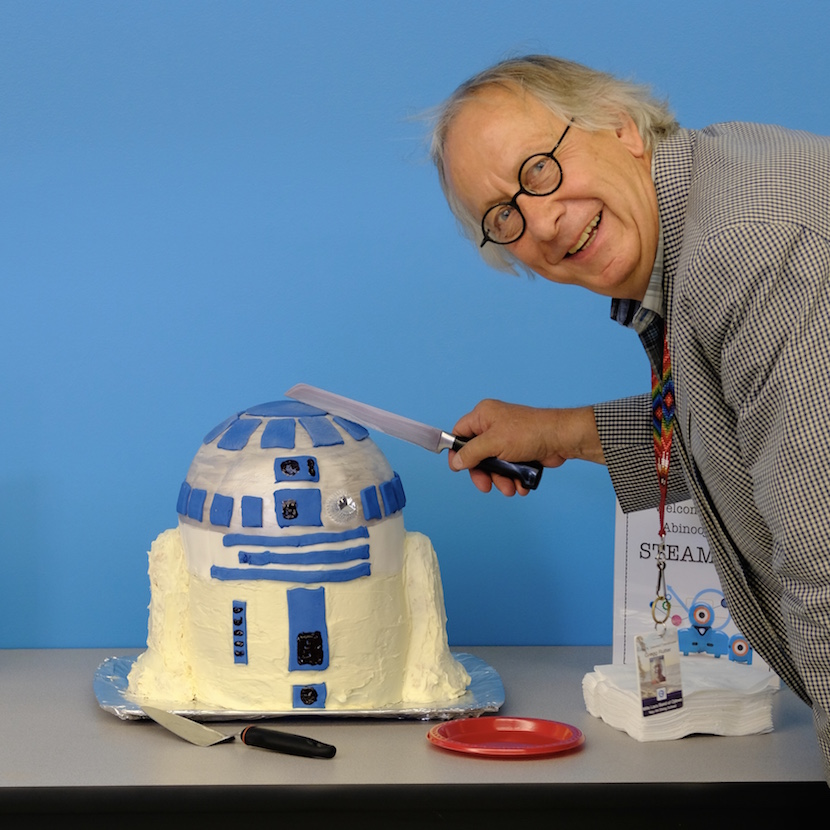
New lab provides opportunities in Science, Technology, Engineering, Arts, and Math
Nay Ah Shing Abinoojiiyag unveiled its new STEAM Lab with bright, crisp paint and colorful “activity grids” built into the newly tiled floor, along with more equipment, tools, and resources.
STEAM stands for science, technology, engineering, arts, and math. All of these areas are included in hands-on learning in the STEAM Lab. Students discover the 4 Cs: communication, collaboration, critical thinking, and creativity, while they learn the 21st century literacy of coding and computational thinking. Computational thinking skills help students develop mental agility — stretching their mental muscles to become creative problem-solvers.
The central elements of computational thinking (decomposition, pattern matching, abstraction, and automation) can be applied to solving almost any problem.
Gregg Rutter, STEAM Lab instructor and coordinator, described these elements: “Decomposition is the ability to break a bigger problem down into smaller parts; pattern matching is finding similarities between things to gain extra information; abstraction means ignoring certain details to be able to come up with a solution that works for a more general problem; and automation is controlling a process by automatic means, reducing human intervention.”
K-5 students learn basic computer science skills and use coding to learn STEAM concepts. With hands-on challenge activities, students are guided in inquiry-driven lessons using age-appropriate tools. One of the goals is to help students see failure to solve a problem as a launching pad for more explorations.
The new equipment being used in the STEAM Lab includes Bee-Bots, Dash and Dot robots, Cue robots, Sphero SPRK+ robots, and littleBits electronic building blocks. Gregg said, “The kids love coming to the STEAM Lab to work with robots, iPads, and coding. We believe that students learn best when they are intrinsically motivated. They are busy learning persistence and problem-solving; they are busy developing a growth mindset.”
The STEAM Lab curriculum was developed to continue through middle school and high school. Nay Ah Shing upper school STEAM teachers Jeannie Gross and Larry Hansen attended a week-long training last summer sponsored by Code.org to help them teach the curriculum designed for students in grades 6 through 10.
The Nay Ah Shing STEAM Lab program shares this belief from Code.org: “We believe that computing is so fundamental to understanding and participating in society that it is valuable for every student to learn as part of a modern education. We see computer science as a liberal art, a subject that provides students with a critical lens for interpreting the world around them. Computer science prepares all students to be active and informed contributors to our increasingly technological society whether they pursue careers in technology or not. Computer science can be life-changing, not just skill training.”
Top: Nay Ah Shing Abinoojiiyag 2018-19 staff showed off the new Nay Ah Shing backpacks in the STEAM lab. Below: Gregg Rutter of the NAS Gifted and Talented program is the mad scientist behind the new STEAM lab.
